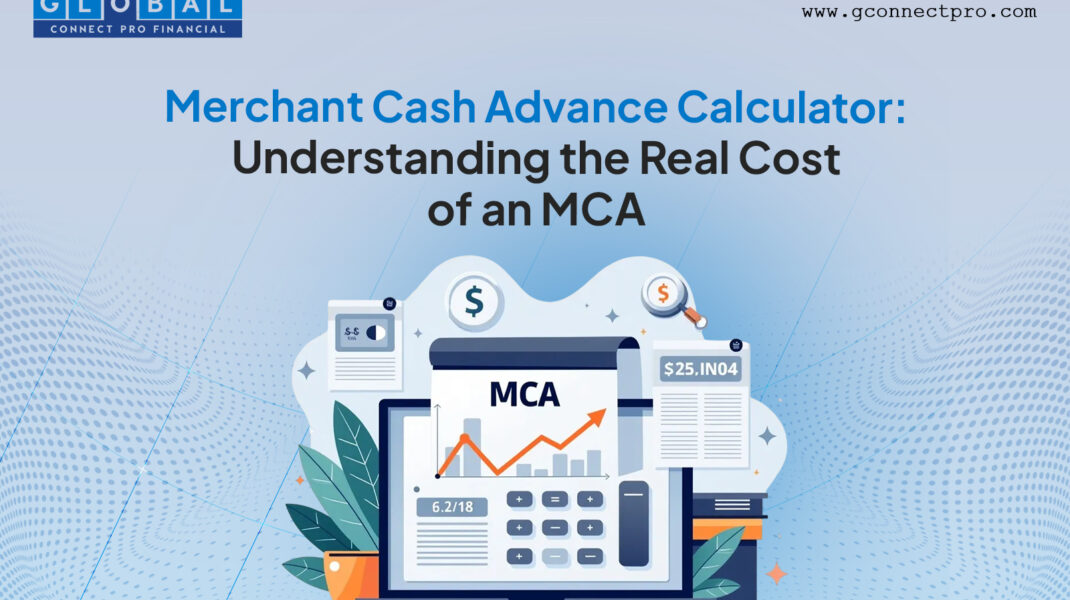Merchant Cash Advance Calculator: Understanding the Real Costs of an MCA

Running a small business is tough, and sometimes cash flow doesn’t match up with expenses. Maybe you need to pay suppliers, cover payroll, or take on a new opportunity. That’s where a Merchant Cash Advance (MCA) comes in. On the surface, it looks like quick, easy money. A lender gives you a lump sum upfront, and you repay it later through a percentage of your daily sales.
But here’s the catch: MCAs can be a lot more expensive than they seem. Many business owners only see the advance amount they’re getting, without realizing how much extra they’ll end up paying back. That’s why using a Merchant Cash Advance calculator is so important. It helps you understand the real costs before you sign anything. And now, with new regulations in 2025, MCAs are finally getting more oversight, meaning more transparency for small business owners like you.
What Is a Merchant Cash Advance (MCA)?
A Merchant Cash Advance isn’t the same as a loan. Instead of charging interest, MCA providers give you money upfront in exchange for a percentage of your future credit card and debit card sales.
In Simple Terms:
- You get cash today.
- The lender takes a cut from your future sales until you’ve repaid the advance (plus fees).
- Payments adjust with your sales—if you sell more, you repay faster. If you sell less, repayment takes longer.
Example: If your café gets a $30,000 MCA, you might agree to pay back $42,000. Every day, the lender takes 10–15% of your credit card sales until the $42,000 is fully paid.
Sounds flexible, right? But the total repayment is where many business owners get shocked.
Why You Should Use a Merchant Cash Advance Calculator
Many small business owners focus only on the advance amount they’ll receive. But the repayment terms often turn out to be a heavy burden. A MCA calculator gives you a clear picture of what you’re really signing up for.
How It Helps You:
- Shows the total amount you’ll pay back.
- Converts the factor rate into something you can understand, like an interest rate.
- Estimates how much will be taken from your sales each day or week.
- Helps you decide if an MCA is worth it or if another loan would be cheaper.
Think of it this way: A calculator is like turning the fine print into plain English, so you don’t get blindsided later.
How Does a Merchant Cash Advance Calculator Work?
The calculator uses three main inputs:
- Advance Amount → How much cash you’re getting upfront.
- Factor Rate → The multiplier that decides how much you’ll repay (usually 1.2–1.5).
- Repayment Terms → How quickly the money comes out of your sales.
Example Calculation
- Advance Amount: $50,000
- Factor Rate: 1.4
- Repayment = $50,000 × 1.4 = $70,000
This means you’re paying $20,000 in fees—and that doesn’t include any administrative charges or processing fees.
Imagine needing $50k for a project, only to realize you’re actually paying back $70k. That’s why the calculator is critical.
The Real Costs of an MCA (What Lenders Don’t Tell You)
MCAs are marketed as “fast and easy money.” And while that’s true, they can also be very expensive.
Hidden Costs You Should Know:
- Factor Rate Confusion → Unlike loans, MCAs don’t use a clear annual interest rate. A factor rate of 1.4 means you’re paying 40% more than you borrowed.
- Daily Holdback → The lender takes a chunk of your daily credit card sales, which can squeeze your cash flow.
- Sky-High Effective APR → When calculated like a normal loan, MCA costs can easily equal 40–100% APR or more.
MCA vs. Small Business Loan (Layman Comparison)
- MCA: Easy to get, quick money, but extremely costly.
- Loan: Harder to qualify for, but way cheaper in the long run.
Bottom line: MCAs are like using a credit card cash advance. You get the money fast, but you pay dearly for the speed.
Regulatory Updates on Merchant Cash Advances (2025)
Big news: Merchant Cash Advances are now under federal regulation. For years, MCA companies operated in a gray area – because they’re technically not “loans,” they avoided lending rules. That changed in 2025.
In Revenue Based Finance Coalition v. CFPB, a federal judge sided with the Consumer Financial Protection Bureau (CFPB), saying that MCAs are indeed “extensions of credit” and must follow fair lending laws.
What This Means for You:
- MCA companies must collect and report data about who they’re lending to.
- There will be more transparency about costs, terms, and borrower demographics.
- It will be harder for shady MCA providers to hide behind confusing terms.
Judge Sanchez even cited the Supreme Court’s Loper Bright decision, saying the CFPB was still acting within its authority.
In plain English: The rules are finally catching up to protect small businesses from predatory MCA practices.
Alternatives to Merchant Cash Advances
If your MCA calculator shows costs that make your head spin, don’t worry – you have other options:
- SBA Loans → Lower rates, but approval takes time.
- Business Line of Credit → Flexible borrowing, pay interest only on what you use.
- Invoice Financing → Get paid faster on your unpaid invoices.
- Short-Term Loans → Faster approval than banks, but usually cheaper than MCAs.
Conclusion
A Merchant Cash Advance calculator is your best defense against signing up for expensive financing without realizing it. By running the numbers, you’ll see the real cost of borrowing—not just the quick cash dangling in front of you.
And now, thanks to new federal regulations, MCA companies are being forced to play fair, disclose costs, and follow rules that protect small businesses. That’s good news for entrepreneurs, but the responsibility is still on you to calculate and compare before committing.

